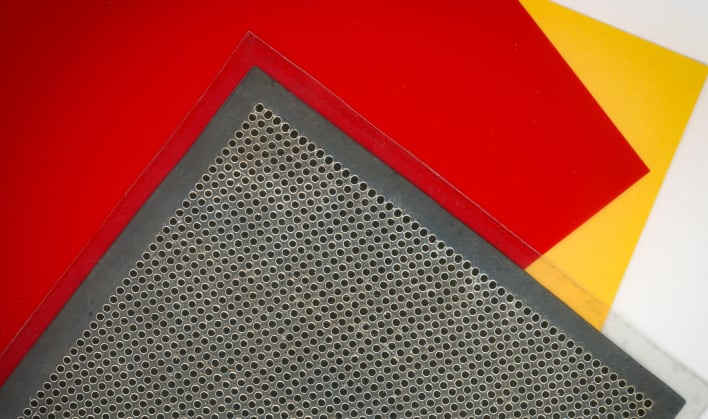MIT Researchers Develop A Paper Thin Flim Loudspeaker That Will Blow Your Mind

Imagine being able to wallpaper your room with speakers, creating the ultimate immersive audio experience. Well, MIT engineers have developed a paper-thin loudspeaker that can do just that. The thin-film loudspeaker is designed using a "deceptively simple fabrication technique," according to the researchers, and only requires three basic steps. The technique can be scaled up large enough to cover the inside of an automobile or to wallpaper an entire room.
One of the unique attributes that is being looked into with this new technology is to provide active noise cancellation in extremely noisy environments, such as an airline cockpit. This can be achieved by generating sound of the same amplitude, but opposite phase. This causes the two sounds to essentially cancel one another out. The technology could also be implemented in an automobile, creating a driving experience completely void of any outside noises.
"It feels remarkable to take what looks like a slender sheet of paper, attach two clips to it, plug it into the headphone port of your computer, and start hearing sounds emanating from it. It can be used anywhere," stated Vladimir Bulovic, the Fariborz Maseeh Chair in Emerging Technology, leader of the Organic and Nanostructured Electronics Laboratory (ONE Lab), and senior author of the research paper. Bulovic added, "One just needs a smidge of electrical power to run it."
The speakers found in your headphones or other audio systems use electric current inputs that pass through a coil of wire that generates a magnetic field. This moves the speaker membrane, which moves the air above it and creates the sound you hear. The new thin-film loudspeaker streamlines the process by using a thin film of a shaped piezoelectric material which moves when voltage is applied over it, and in turn, moves the air above it and produces sound.
Jinchi Han, a ONE Lab postdoc, and co-senior author of the research paper, remarked, "This is a very simple, straightforward process. It would allow us to produce these loudspeakers in a high-throughput fashion if we integrate it with a roll-to-roll process in the future. That means it could be fabricated in large amounts, like wallpaper to cover walls, cars, or aircraft interiors."
Top Image Courtesy of MIT/Felice Frankel

